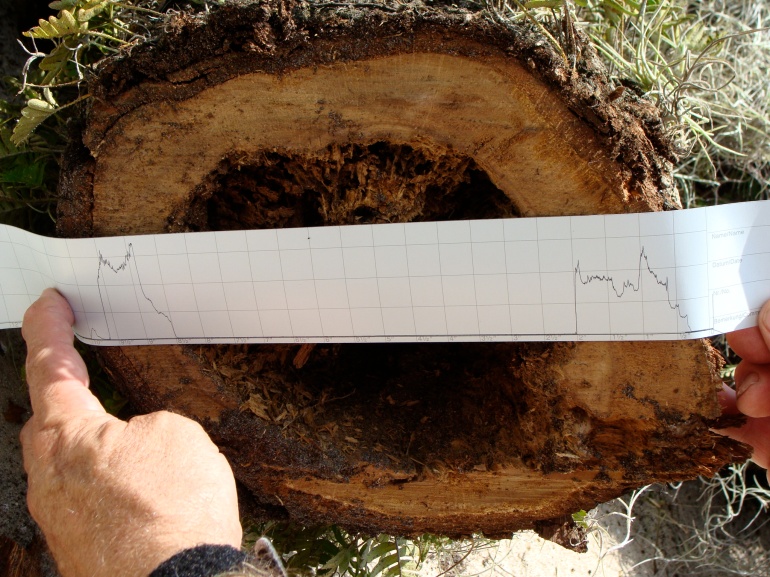The IML Resistograph (based on penetration resistance theory) at its most basic is the measurement of drilling resistance as it travels through wood. The drill bit, under constant drive is progressed through the cross section of the tree. The “needed” energy is measured as well as the distance of the drill bit inside the tree. As the drill bit travels through decayed wood or hollows the needed energy greatly decreases. Variations in sawdust colour can also be assessed for signs of decay. This technology is not only used on trees, it can also detect decay on all wooden structures. The observed variations in needed energy requires a level of subjectivity when interpreting the readings, but the technology has been shown to successfully identify decay (MANNING & DEANS 2010).
Depending on the make and model of Resistograph, and thetype of wood being tested, the drill bit is usually between 1.5mm and 3mm in diameter and can measure to a depth of approximately 950mm. Thinner drill bits can be problematic and are prone to taking non-linear drilling paths, which in turn can create skewed resistance readings unrelated to wood condition (DOLWIN, LONSDALE, & BARNETT, 1999). Battery type (and charge), drill bit sharpness, wood moisture, air temperature, knots and operator “steadiness” have all been shown to affect readings (UKRAINETZ & O’NEILL 2010). Despite this, it is generally accepted that the resistance readings reliably detect decay (JOHNSTONE et al. 2007). However, many studies have observed that the drilling creates entry points and pathways for decay causing organisms (such as HELLIWELL, 2007). KERSTEN & SCHWARZE (2005) also detected that the resulting sawdust from the resistograph drilling provided a growth substrate for emerging wood decay fungi. Both the resistograph and testing service is generally cheaper than the previously mentioned non-destructive testing devices but should only be used in a limited number of circumstances due to the previously mentioned potential decay spreading side effects.

(Source: IML Australia)

As the drill bit travels through decayed wood or hollows the needed energy greatly decreases (as shown in this readout).
(Source: IML Australia)